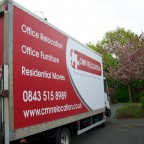Assess your needs and current situation: You need to be clear about the purpose of your office relocation (e.g. lease break, lease expiry, planned growth or contraction) in order to define your needs and map out the appropriate office move plan. There are some big decisions that must be agreed upon as the starting point and which will form the basis of the subsequent planning process, including the details of the existing lease and notice period and your current obligations and liabilities.
Be clear about your requirements: A clear understanding at the outset of your basic strategic and operational requirements will make the whole moving office process go more smoothly – and save time. Don’t worry too much about the technical specifics (as that is part of the advice given by the external property move professionals). However, you must have an overall idea and consensus from the decision makers about the key drivers of the office move including:
- Where you want to move to;
- how much space you need; when you need to be in by;
- what key features you need your new office to have;
- what your planned business objectives (including growth plan) the move needs to satisfy;
- and type and length of lease you want.
Build the right office move project team: An office move is a major undertaking and a collaborative effort is needed for a successful outcome. Putting together the right project team is critical and should include people who will help facilitate all aspects of the move. It will need to comprise both internal and external members. A project leader must be put in charge of the move process as soon as the decision to move office has been made. This person must have enough time to devote to the office move project and should:
- have the trust of senior management;
- the authority to act on behalf of the company;
- be senior enough to be able to make decisions;
- be a good organizer of people and processes;
- have experience of setting and working within budgets;
- and be a good communicator.
Start early: There’s a lot to do, so the earlier you start, the greater the chance of achieving the smooth move your company expects. It is impossible to plan too far ahead. Once the project leader has been appointed, work should start. You should start reviewing your options 9 – 18 months prior to your lease expiration regardless of whether you are considering renewing, renegotiation or relocation. It is vital that you allow enough lead-time to increase the amount of leverage and competition between the various options, which can result in substantial savings for you.
Create a realistic budget: Creating a realistic office move budget is a critical planning tool that will help you assess your costs and manage them throughout the process.
Engage the right office move professionals: The whole moving office process can be complex, stressful and time-consuming. After people costs, property costs are most company’s next biggest expenditure. The decisions you make will have an impact on your company’s profitability. Working with the right professional team is the single biggest must-do for any company thinking of moving office. They will guide you through the process, save you money in the long run and also make sure you don’t make any critical mistakes.
Don’t sign any lease documents without getting legal advice: Your Property Solicitor will negotiate the detail of the lease documentation to minimise your exposure to potential liabilities, and subsequently, to advise you on the implications of the detailed terms in the final documents to ensure you are aware of your ongoing responsibilities.
Communication: Internally, change can be unsettling for staff and this can certainly be the case with an office move. At the same time as the office move process is going on, your company has to continue to run its business and focus on its existing workload and commitments. However, moving office is a great opportunity to affect positive change management, improvement in business performance, increased morale and momentum. Externally, there are many moving parts to an office move and you need to ensure that everyone involved in the project is regularly updated, especially if there are any changes. If you keep the lines of communication open to all interested parties, internal and external, your office move will have a much greater chance of success.
Take advantage of the opportunity: Clear out old files and purge all storage areas of unneeded items prior to moving. Also consider scanning any documents no longer needed in hard copy (remember to dispose of unwanted files securely). Secure storage and/or archiving of documentation is a flexible, safe and cost-effective solution to free up valuable and more costly office space. It can be accessed at any time by arrangement and provides excellent off-site backup for damage limitation in case of fire or other disaster. You should also take the opportunity to consider the following:
- Upgrading – Moving office is an opportunity to update to modern, efficient and space-saving equipment;
- Review existing suppliers – Moving office can provide a trigger for renewing/switching supplier contracts on favorable terms.





